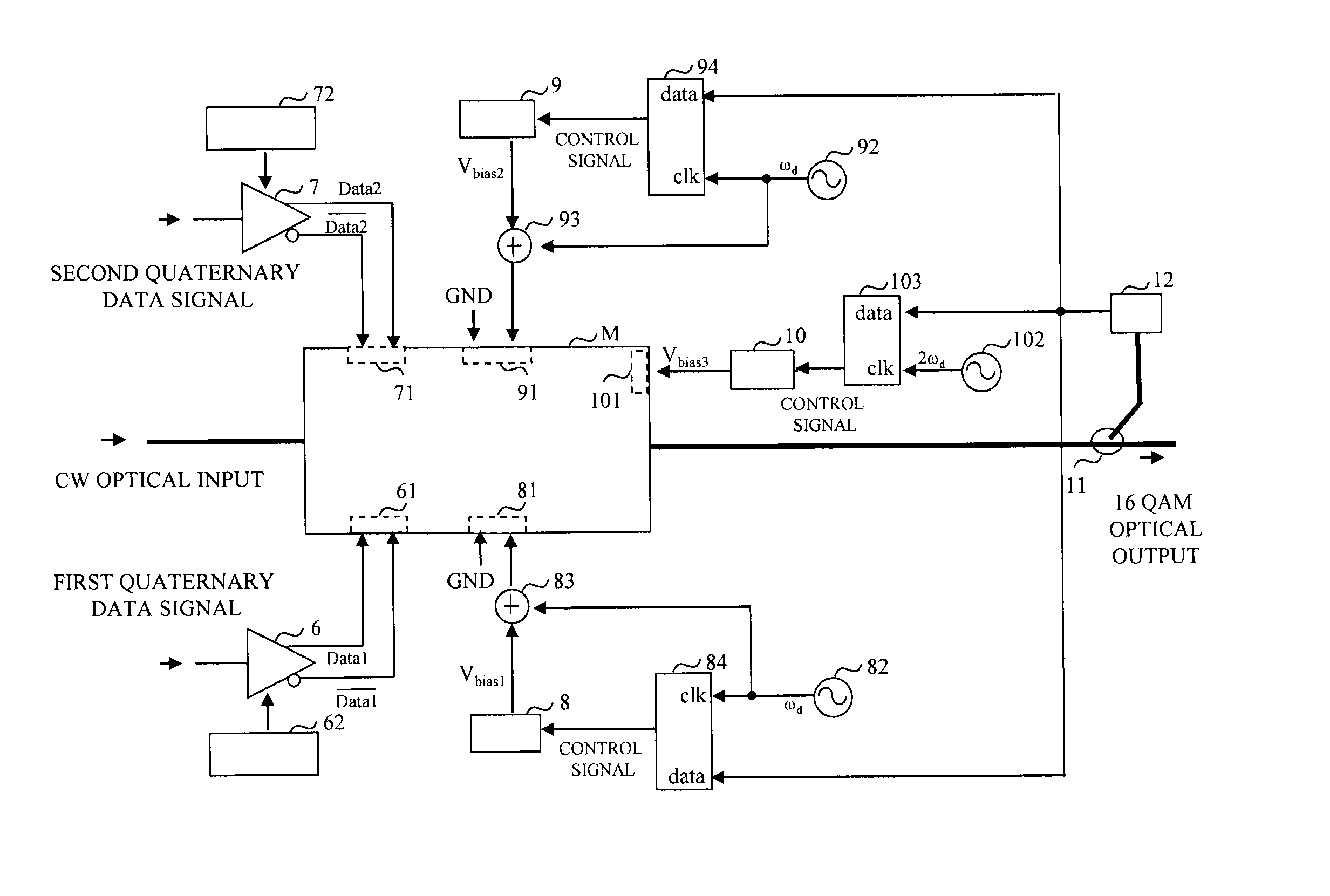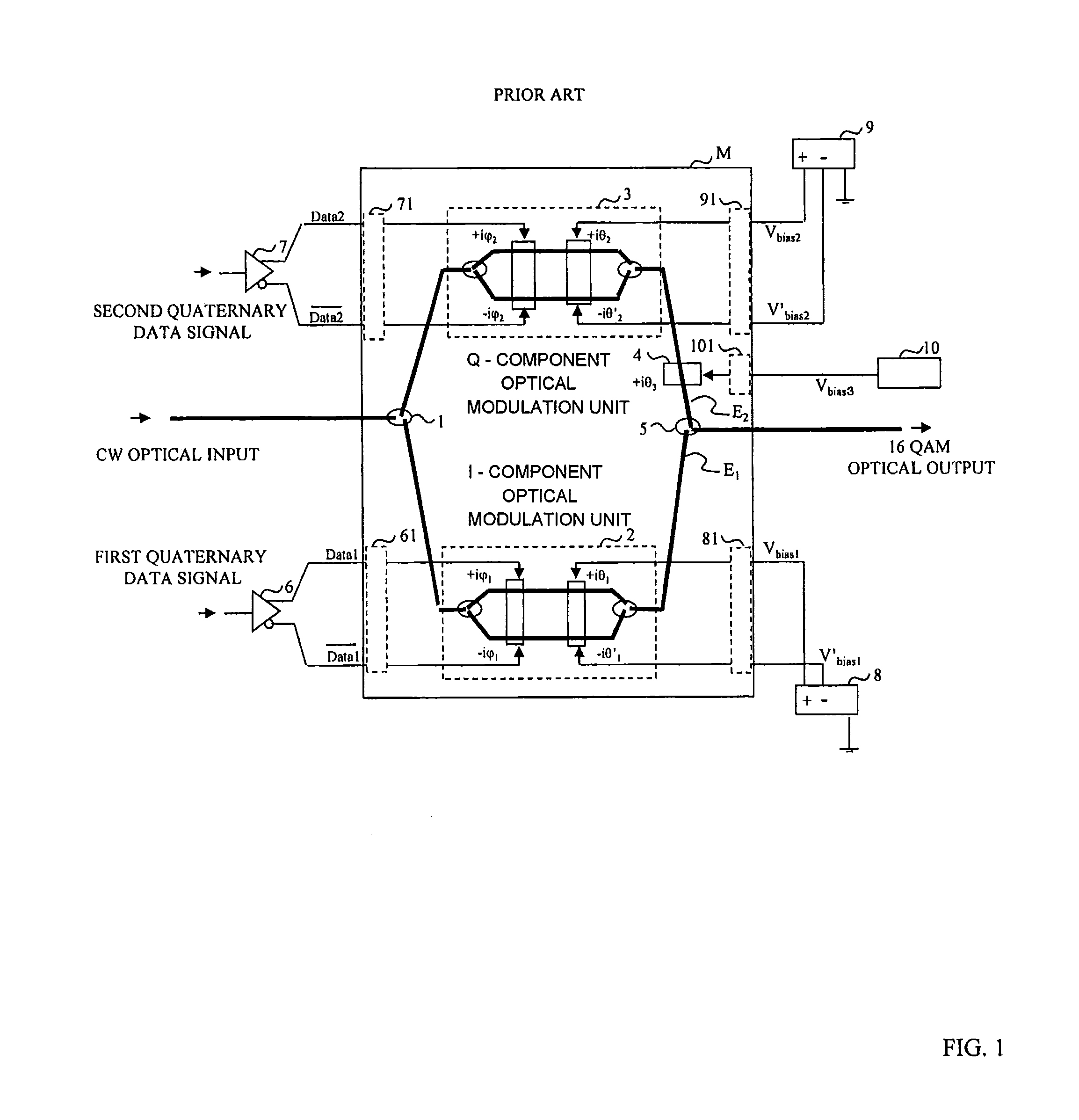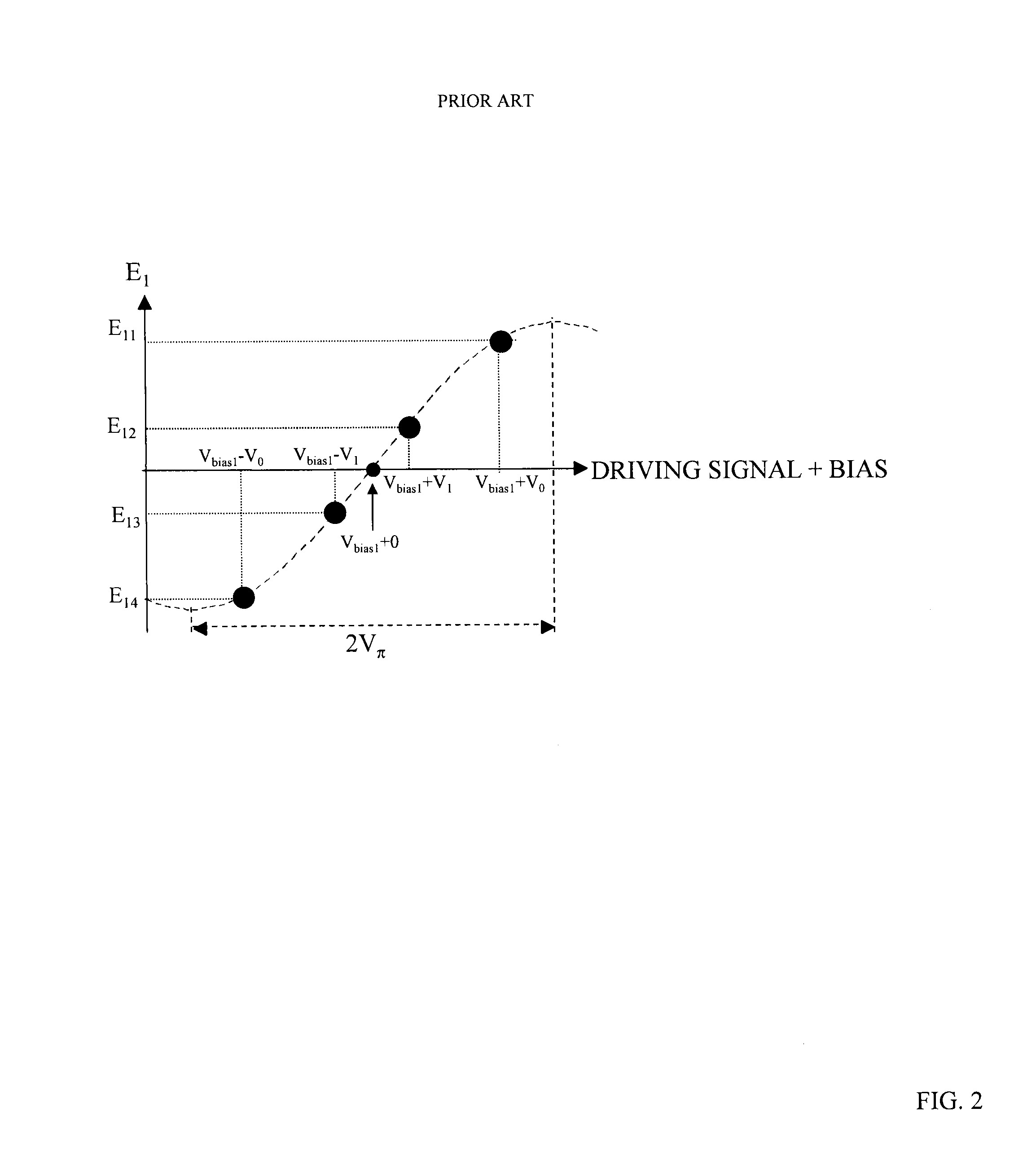Optical modulation device and bias voltage control method
a technology of optical modulation device and bias voltage control, which is applied in the direction of optics, digital transmission, instruments, etc., can solve the problem of relativly difficult to detect a drift occurring in vsub>bias3/sub>, and achieve the effect of maximizing or minimizing an optical power
- Summary
- Abstract
- Description
- Claims
- Application Information
AI Technical Summary
Benefits of technology
Problems solved by technology
Method used
Image
Examples
first embodiment
[0187]FIG. 10 shows the configuration of an optical modulation device according to a first embodiment. In the dual drive type IQ optical modulator M, the differential drive signals Data1 and Data1 and Data2 and Data2 output from the first and second driving amplifiers 6 and 7 are applied to the first and second driving electrodes 61 and 71. The first and second quaternary data signals are input to the first and second driving amplifiers 6 and 7 and the output amplitudes of the signals are adjusted by the first and second amplitude adjustment units 62 and 72. In the first embodiment, pre-emphasis is not used, and the four signal levels V0, V1, −V1, and −V0 of the differential signals added to the first and second driving electrodes 61 and 71 are set at even intervals. In other words, (Data1- Data1) and (Data2- Data2) have the four values V0, V1, −V1, and −V0, and |V0−V1|=|V1−(−V1)| is established.
[0188]As a first specific example, it is assumed that the interval between the four leve...
second embodiment
[0199]FIG. 11 shows the configuration of an optical modulation device according to a second embodiment. As the difference between the first and second embodiments, pre-emphasis is used to set the values of the electric fields E11, E12, E13, and E14 of the four types of light output from the first optical modulation unit 2 at even intervals and set the values of the electric fields E21, E22, E23, and E24 of the four types of light output from the second optical modulation unit 3 at even intervals. In other words, Equation 18 is established.
E11=E21=sin(V0 / Vπ×π / 2)
E12=E22=sin(V1 / Vπ×π / 2)
E13=E23=sin(−V1 / Vπ×π / 2)
E14=E24=sin(−V0 / Vπ×π / 2)
|sin(V0 / Vπ×π / 2)−sin(V1 / Vπ×π / 2)|=2|sin(V1 / Vπ×π / 2)| (Equation 18)
[0200]Required V0 and V1 are obtained when the first and second quaternary data signals are input to the first and second pre-emphasis units 63 and 73, respectively. The control of Vbias1 to Vbias3 is performed in the same manner as the first embodiment.
[0201]As a first specific example, it is ass...
third embodiment
[0203]FIG. 12 shows the configuration of an optical modulation device according to a third embodiment. The third embodiment is different from the first embodiment in two points.
[0204]A first different point is that this embodiment uses a single driving type IQ optical modulator M instead of a dual driving type IQ optical modulator M. Each of the first and second driving amplifiers 6 and 7 performs a single-phase output, and their outputs Data1 and Data2 have the four signal levels V0, V1, −V1, and −V0 relative to the ground level. Although twice the output amplitude of the first embodiment is required, there is an advantage in that the mounting area of the IQ optical modulator M can be reduced.
[0205]A second different point is that the first and second bias power supplies 8 and 9 perform a single-phase output, their DC voltages are converted into differential signals by the first and second dithering amplifiers 85 and 95 after having the outputs of the first and second oscillators 8...
PUM
| Property | Measurement | Unit |
|---|---|---|
| phase | aaaaa | aaaaa |
| I-component bias voltage | aaaaa | aaaaa |
| bias voltage | aaaaa | aaaaa |
Abstract
Description
Claims
Application Information
 Login to View More
Login to View More - R&D
- Intellectual Property
- Life Sciences
- Materials
- Tech Scout
- Unparalleled Data Quality
- Higher Quality Content
- 60% Fewer Hallucinations
Browse by: Latest US Patents, China's latest patents, Technical Efficacy Thesaurus, Application Domain, Technology Topic, Popular Technical Reports.
© 2025 PatSnap. All rights reserved.Legal|Privacy policy|Modern Slavery Act Transparency Statement|Sitemap|About US| Contact US: help@patsnap.com



